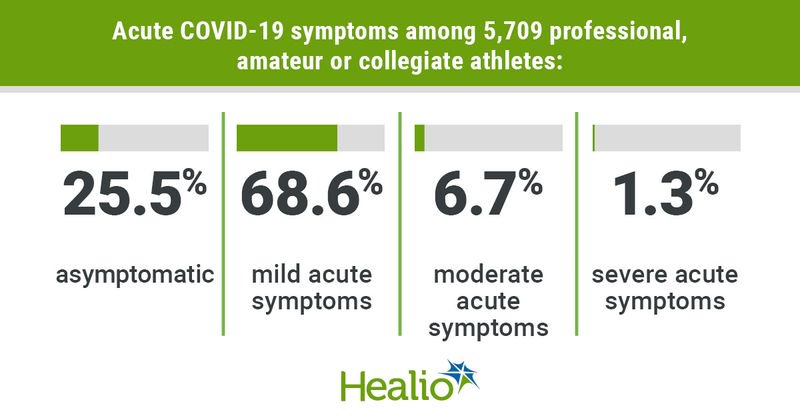About 94% of athletes had no or mild acute symptoms after testing positive for COVID-19
Results from a systematic review revealed 94.1% of athletes who tested positive for COVID-19 were asymptomatic or experienced mild acute symptoms; however, persistent symptoms in 8.3% of athletes could affect return to play.
Using MEDLINE, EMBASE, SCOPUS and SPORTDiscus databases, researchers performed a systematic review of 43 studies that included 11,518 professional, amateur or collegiate athletes who tested positive for COVID-19 and were published between 2019 and 2022.

Overall, 35 studies reported acute COVID-19 presentations in 5,709 athletes. Among these athletes, 25.5% were asymptomatic; 68.6% exhibited mild acute symptoms; 6.7% exhibited moderate acute symptoms; and 1.3% exhibited severe acute symptoms.
Additionally, 11 studies reported post-acute COVID-19 presentations, which were broadly defined as those that emerged, persisted or returned after the active phase of infection, according to the study. Researchers found 8.3% of athletes (range of 3.8% to 17% in the literature) exhibited persistent COVID-19 symptoms, such as anosmia or dysgeusia, cough, fatigue, chest pain and headache.
Among athletes who underwent any cardiac testing, 5% exhibited myocardial involvement, while 2.5% of athletes who underwent MRI exhibited myocardial involvement. After analyzing the studies that included a control group of uninfected athletes, researchers could not confirm a causal relationship between COVID-19 and myocardial involvement.
“A small proportion of athletes experienced persistent symptoms while recovering from infection, which were mostly mild in nature, but could affect return to play decisions and timing,” the researchers wrote in the study. “Future studies should incorporate control athletes (ie, non-infected) and systematically follow athletes with COVID-19 to better understand the predictors and natural course of post-acute symptoms among athletes.”

